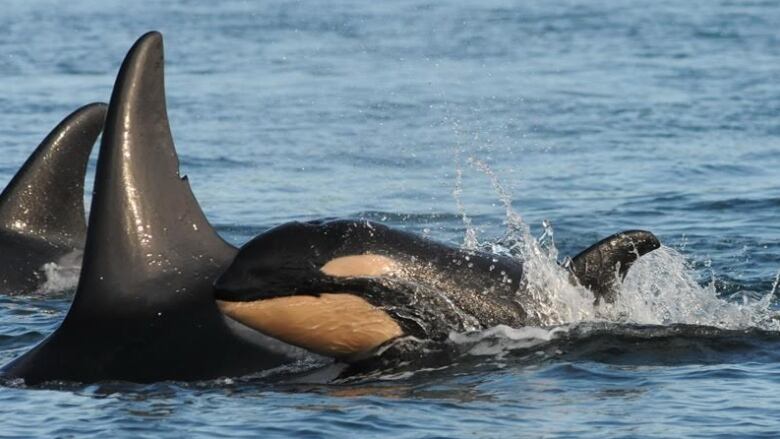Orcas affected by high-pitched ship noises in Haro Strait study says
Vessel noise may threaten southern resident killer whale population

Ships in the busiest waters off B.C.'s South Coast are making high-pitched noises that hit the most sensitive hearing range of orcas, according to a new study by whale researchers.
Thestudy out of Seattle found vessels emit sounds that are inaudible to most humans but potentially damaging to orcas, who use sonar to communicate and hunt. Researchers used data collected from underwater microphones in the Haro Strait, a high-traffic route for ships.
"We were concerned that there may be a frequency overlap between the marine noise and the signals that our local marine life are using," said Scott Veirs, president of Beam Reach Marine Science and Sustainability School.
At least 20 ships make their way through Haro Straight every day, according to Veirs.
The noise from ships can interfere with orcas' ability tocoordinate huntsand members of pods may even get lost if they are not able to hear, according to theresearchers.
- VIDEO |Killer whales' feeding frenzy caught on camera
- VIDEO |Orca tosses seal 'way up' in rare mid-hunt sighting
Researchers have identified low salmon stock, pollutionand vessel noise as the three biggest threats to the south resident orca population.
After years of population decline, there appears to be somewhat of an orca baby boom on the West Coast with eightbabies born in 2015 and one reported birth so far in 2016. The southern resident killer whale population count was 84 as of January 2016.
Sensitive hearing

Smaller whales like orcas, dolphins and porpoises communicate at higher frequencies than large baleen whales like humpbacks.
"In fact, killer whales [orcas] have hearing that's most sensitive at 20 kilohertz, which is right at the very top of what young human earscan hear," said Veirs.
People can listen to a livestream of the underwater microphones in the Haro Strait at orcasound.net.
Researchers from Ocean Networks Canada and Port Metro Vancouver are conducting similar research in the Georgia Strait.
To listen to the full audio, click the link labelled:High-pitched ship noises may be affecting orcas' sensitive ears.












_(720p).jpg)


 OFFICIAL HD MUSIC VIDEO.jpg)
.jpg)



























































































